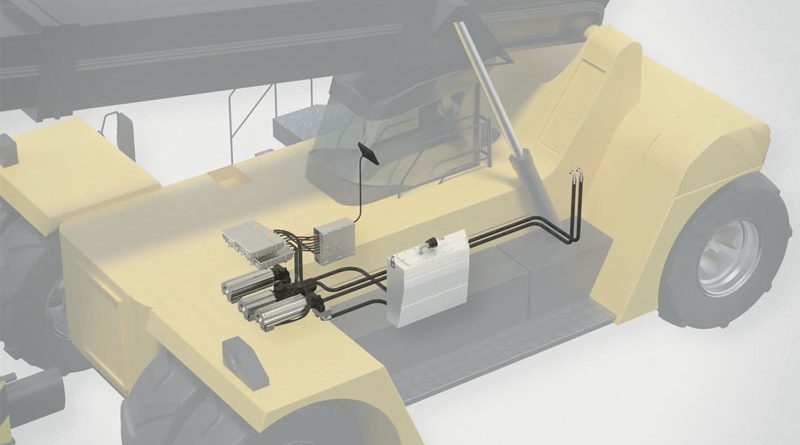Optimising Efficiency in High-power Lifting Applications
Parker’s Electro-Hydraulic Pump System reduces fuel costs on high-power lifting applications, paving the way for complete electrified vehicle solutions. Decoupled power distribution supports use of smaller engines and optimises efficiency.
by Elena Magistretti
The Mobile Systems Division of Parker Hannifin Corporation, the global leader in motion and control technologies, has released its Electro-Hydraulic Pump System (EHPS) for high power lifting applications in the construction, materials handling and mining markets. The new integrated solution provides the opportunity to realise fuel cost savings of up to 50% and gives the potential for customers to downsize or remove the diesel engine, therefore creating an optimised, highly-efficient, completely electric vehicle. There is a huge shift towards electrification across many areas of industry and society delivering environmental and sustainability as well as performance benefits. As a result, large numbers of OEMs are looking to tap into the technology which also supports improved maintainability, greater safety, and compliance with increasingly stringent emissions regulations.
Decoupled power distribution optimises efficiency
Conventional solutions in this area work with coupled power distribution, where the engine is sized for peak demand with no energy storage or recovery capability. In addition, the efficiency (torque/speed operation) of the internal combustion engine (ICE) tends to be low.
With its EHPS, Parker has addressed a market need for decoupled loads and power distribution. This design concept facilitates far better engine management whereby energy storage and recovery functions can be introduced. With its separate drive train, the EHPS also offers high ICE efficiency via power point operation.
Energy is recovered while materials are being lowered
Parker’s system solution comprises motor and pump technology to recover energy while materials are being lowered – all controlled by a power inverter. Embedded Parker-derived software provides the system function and operational interface, while peripheral manifolds and system components deliver functionality to key services throughout the wider hydraulic system. Optimising efficiency and capturing energy also clears the way for the creation of hybrid and fully electric vehicles that have a fuel / charge period that enables extended running times; thus, meeting the demanding duty cycles required in heavy duty mobile applications. Maintenance demands are also reduced thanks to the benefits of a smaller constant-speed engine, lower generated heat related to the efficiency improvements, and advanced ‘health’ monitoring.
Successful tests in a number of customer applications
Parker’s EHPS has already been put to the test in a number of customer applications. A hybrid wheel loader, for example, achieved a 50% reduction in its energy requirement. Additionally, the system’s high-power density allowed a smaller frame to be used. The project also saw hydraulic heat significantly reduced, which in turn enabled reduced sizing of thermal management hardware such as the pump, fan motor, fan and radiator.
The success of this integrated, space-saving solution proved similar with a hybrid reach stacker, which again demonstrated fuel savings (30%) and productivity improvements with quicker operator responses in lifting, lowering and driving. Maintenance also proved easier due to the system’s modular design and self-diagnostics, while up to 100 tonnes less CO2 emissions was predicted to be generated based on 5000 hours running time per year.
A new facility for the validation of the electrification system
To reduce the customer’s risk levels and ease of adoption of this energy saving technology into other customer applications, Parker has unveiled a state-of-the-art electrification system development and validation facility in Warwick. Using the flexibility of large precision programable electric motors, this facility is able to replicate any loading and duty cycle profiles whilst monitoring system efficiency, energy usage, capture and storage.
Future customers risk levels can be significantly reduced as the system and software can be developed, diagnostics validated, functional safety confirmed, and lifetime reliability testing completed prior to the system being installed on a customer vehicle.

